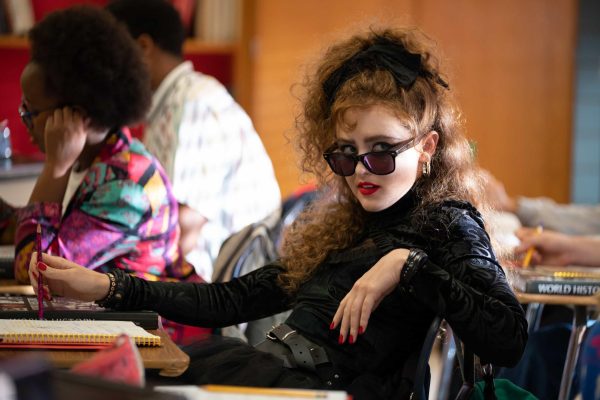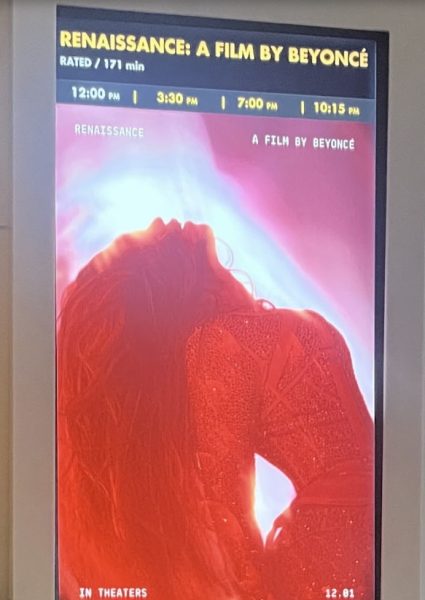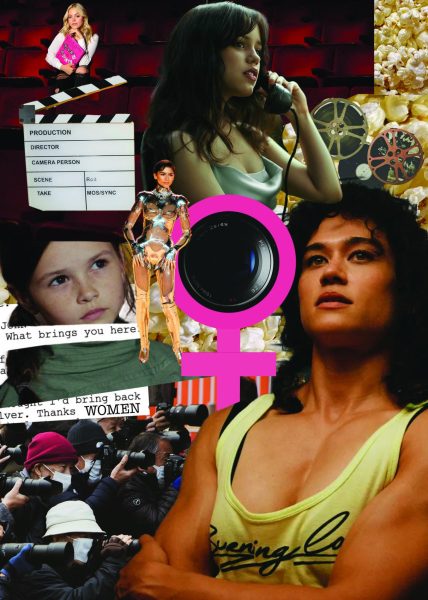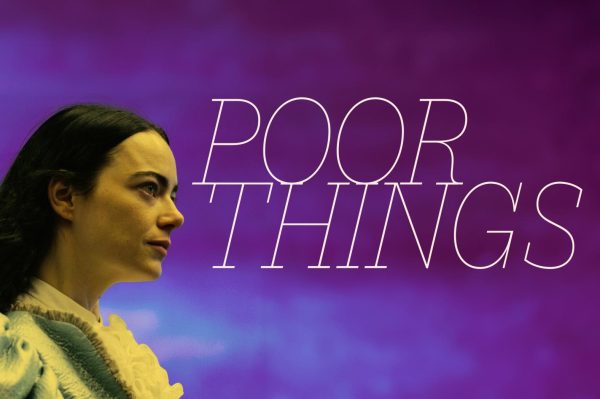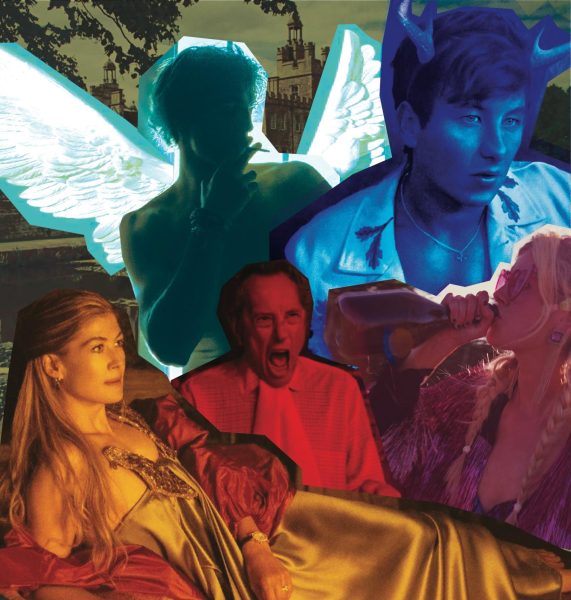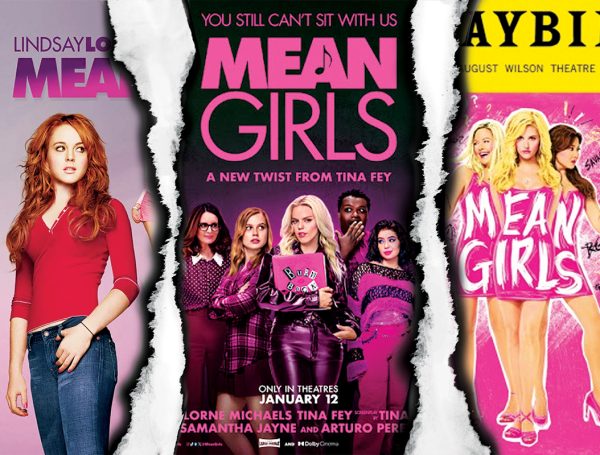“West Side Story” review: Rebirth in reinvention
February 16, 2022
Steven Spielberg’s reimagining of “West Side Story” puts a mirror up to America. It is masterfully supported through realism and cultural nuance. Reverently and intentionally reborn, Tony Kushner’s scholarly approach to the screenplay honors the voices of this time, finding the truth of their experiences and in their dreams.
Spielberg’s opening shot of the San Juan Hill neighborhood in Manhattan’s West Side sets up destruction, as a crane shot pans through a neighborhood in ruin. The tension that comes with the disenfranchised and dejected members of society comes to fruition through two rival street gangs: the Jets and the Sharks. In the five-minute prologue that effectively utilizes Leonard Bernstein’s timeless score and Justin Peck’s masterful choreography, their stories are told without dialogue: a life in rubble full of resistance to change, adaptation, the possibility of rebirth– to anything foreign.
The Sharks are composed of impassioned working class immigrants from Puerto Rico. Bernardo (David Alvarez) is their driving force. Alongside him is his girlfriend Anita (Ariana DeBose), a seamstress dedicated to her new life in “Nueva York,” and his little sister Maria (Rachel Zegler), who supports herself as a night shift cleaner at Gimbels Department Store. For a social mixer with members of the Jets, Bernardo and Anita set up Maria with Chino (Josh Andres Rivera), a meek future accountant whom they hope may lead Maria out of the bloodbath of the West Side.
On the other side, the Jets are bitter brothers, sons, and grandsons of immigrants. Hardly holding on to hope, they are a gang grounded in brotherhood, bitter at the world for changing around them and no longer catering to them. The head of the hopeless is Riff (Mike Faist), and his best friend Tony (Ansel Elgort) is an ex-convict who has just returned from a year in prison for almost beating a man to death. He now looks for a second chance at life.
When Tony first sees Maria at the dance, love at first sight is marked by desire and possibility. This is the first moment of quiet we see as the two speak the same language. It is not in speaking but in coy choreography that a moment of hope and possibility sparks. There is a tinge of aspiration for union beyond coexistence, love and life. As Tony climbs over the fire escapes to see Maria later in the balcony of her apartment, it becomes clear that Zegler’s portrayal of Maria has more agency, rather than the past renditions that make her a virginal symbol. She is choosing this love for herself. You cannot keep your eyes off the magic of this moment, especially as they sing “Tonight.” Spielberg’s framing of the balcony scene involves different barriers, as they both race around in the fire escape to be close to one another. For a moment, there is an escape from the inevitable, a new life for both of them as they are reborn together.
The “Romeo and Juliet”-inspired text is marked by tragedy, but it is more evident through the supporting characters perhaps because of Kushner’s dedication to historical accuracy and Spielberg’s shots reflecting realism and racial commentary. For instance, DeBose’s portrayal of Anita is intrinsically her own. She is Afro-Latina, which informs who Anita is and wants to be. Her doe-eyed hope for a new life in the new city is marked by her triumphant anthem “America.” She does not see her disadvantages as setbacks, but sees them as her strength. Still, there is a devastating duality in her musical number, especially in the couplet “Life is alright in America / if you are white in America.” This rings loud as it is choreographed in the streets of the West Side, traversing through turmoil, plagued by prejudice, as they carry on working ten times harder than their neighbors.
Alvarez’s performance as Bernardo is passionate in all aspects: in his love for Anita, his stubborn protection of his little sister, and in fighting for a life of freedom. In Faist’s portrayal of Riff, he is devastatingly human. His motivation for destruction lies in fear and lack of control. His life as he knows it is being taken away. His strongest, most meaningful relationship with his best friend Tony is tinged by Tony’s new outlook on life and his desire to be better than he was. We understand why he and the Jets are the way that they are, and Faist effectively depicts the powerlessness of Riff.
Rita Moreno’s return to “West Side Story” is altogether fitting. Playing Valentina, the widow of Doc from the original story, her place in society is ambiguous. As a Puerto Rican who married a white man, she sees life through a different lens than the rest of the characters. She is representative of a harmony that we never see last in the film, of coexistence. Moreno has arguably the most powerful moment in the movie, as she performs “Somewhere.” Originally performed by Tony and Maria in reference to their lives together, Valentina adds depth to the devastation, as she married a white man. It was possible for her, but it is too divisive now. She pushes through the brilliant late Stephen Sondheim’s classic, giving it a new life of its own: “there’s a place for us / somewhere a place for us” with no safe place of peace to be found. Instead of a song of hope, it falls to hopelessness with rueful anger in her vocals. There is no longer a wonder of what could be, rather what could have been.
It is hard to separate the themes of the film with our present moment. In a moment in the kitchen, Bernardo uses a Polish slur in reference to Tony to upset Maria. Anita responds: “Now you sound like a real American.” “West Side Story” asks these questions: Who belongs in America? Who is an American? Should the police interfere with that much power, and is the brutality racially motivated? What does dehumanization look like?
The reinvention of “West Side Story” has allowed roles of race to be reclaimed. In casting Zegler, there is a new level of authenticity to her portrayal of Maria compared to the 1961 version which cast Natalie Wood. Representation matters, and the rebirth of “West Side Story” recognizes and works for the voices that were once suppressed in the story, making their struggles and strengths through adversity more authentic. The use of Spanish language is prominent in the film, and Spielberg made a conscious choice to not include subtitles for these scenes. In using subtitles, it assumes that the intended audience is English speaking. It would have been disrespectful. The actor’s emotional gravity carries their performance that without understanding Spanish, you are able to understand their intentions.
Spielberg’s “West Side Story” is more than a remake. Given a second chance to correct cultural and historical inaccuracies and to give voices to those who did not have them at the time, to require proper representation, it has been reborn. Through subtlety and a devotion to realism, the romantic tragedy sweeps you up in its story. Spielberg’s work inspires storytelling and the desire for second chances at life through the real and imagined.
“West Side Story” is now available in theaters.











